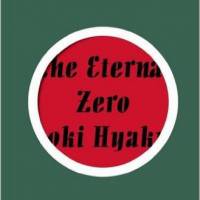Revisit the end of World War II with Japan's all-time best-selling paperback, "The Eternal Zero" by Naoki Hyakuta, originally published in Japanese in 2006. Although the movie adaptation sparked controversy with its nationalistic ending, the book does not glorify war. Hyakuta's storytelling structure, however, lets every opinion — from pacifistic to jingoistic — a chance to be heard.
The Eternal Zero, by Naoki Hyakuta, Translated by Chris Brynne and Paul Rubin.
352 pages
VERTICAL, Fiction.
Kentaro and Keiko, adult grandchildren of a kamikaze pilot, decide to investigate their grandfather's death, leading to a series of interviews with former soldiers and pilots who worked with him during the war. The "interviews" are included verbatim, so the reader briefly inhabits the memories of these men before returning to the main plot, set in present-day Japan. This narrative conceit allows a variety of perspectives on war, including from farmers, company executives and even a yakuza member. The grandchildren's journey to understand the past is mirrored in the plot drive of the present, as Kentaro strives to rededicate himself to his studies and Keiko must make an important life decision. For fans of military aviation, Hyakuta's impressive research offers insight into the air battles and warplanes of WWII, including the inner workings of "volunteering" for kamikaze duties.
Portrayed through the eyes of the survivors who fought alongside him, the story gives us a multifaceted look at a soldier in wartime Japan, as he journeys from coward to hero to compassionate leader. A twist ending adds poignancy to the tale.


















With your current subscription plan you can comment on stories. However, before writing your first comment, please create a display name in the Profile section of your subscriber account page.